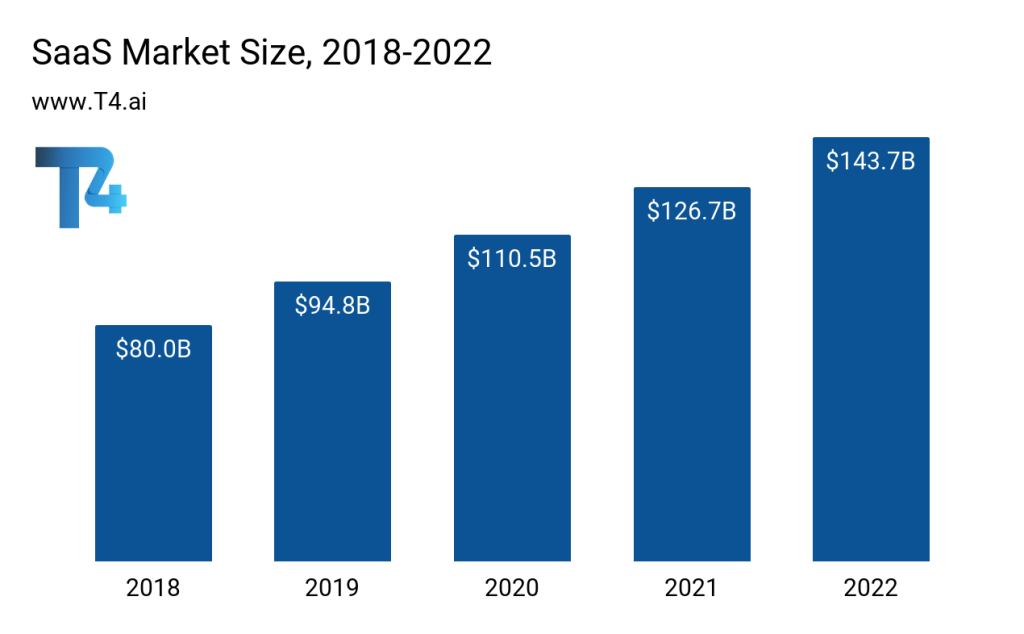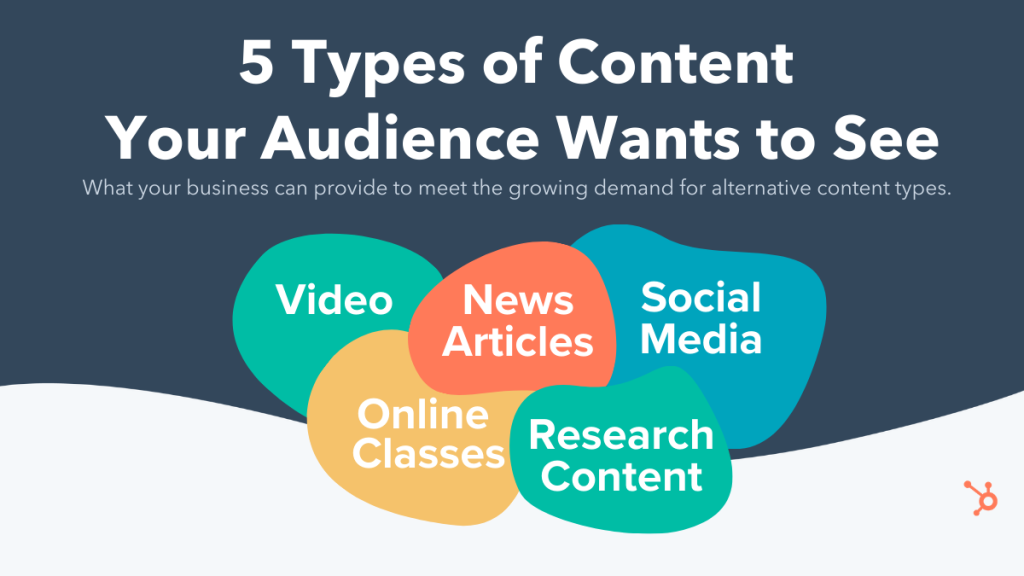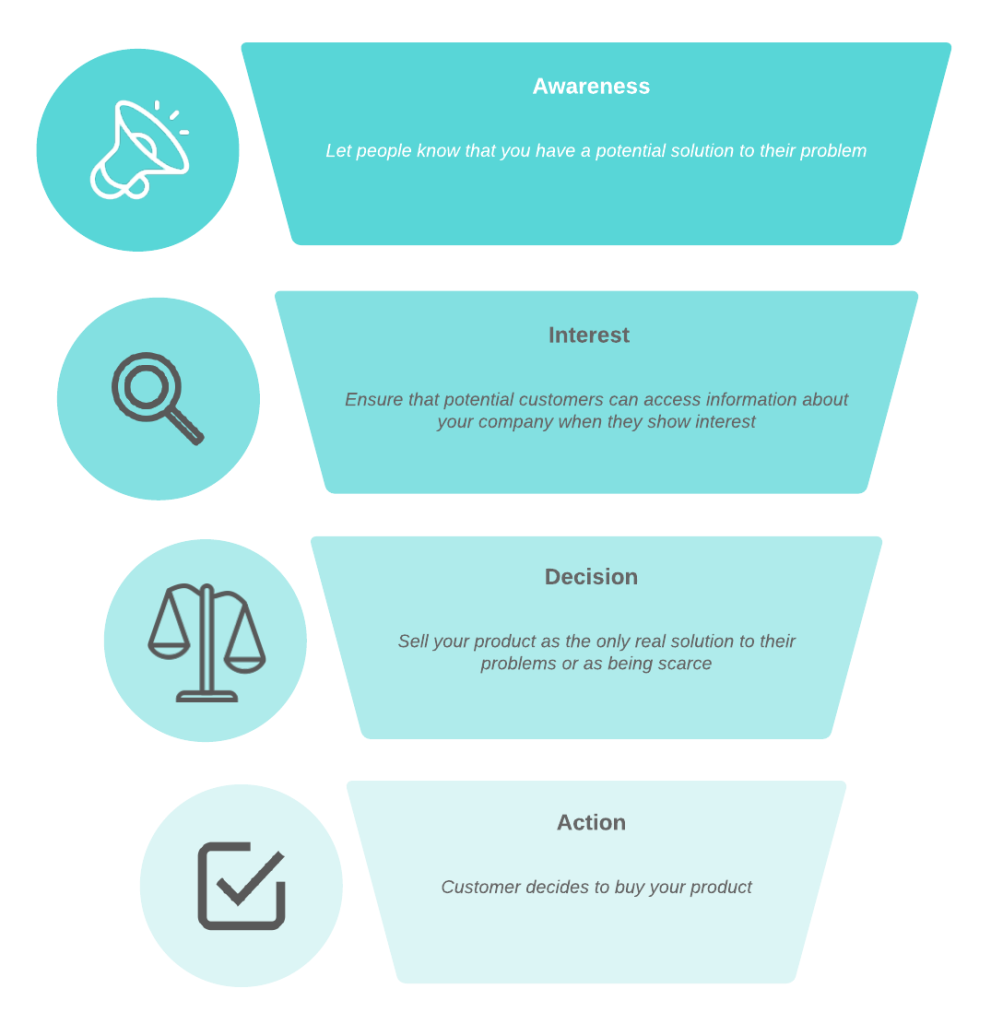Content marketing brings incredible awareness for your company and products, builds trust with consumers, drives traffic and leads, and can even impact your bottom line in a (probably the most) positive way.
The SaaS niche is (one of) the hottest right now. Almost every service provider is hurrying to transform their offering into some kind of SaaS, as the software provides exponential scalability while keeping the same liabilities as when they had just a few customers.

[Source]
But most people consider blogging to be the be-all and end-all of content marketing. According to Scott Chow from The Blog Starter, while blogging can be a good business model by itself, the model itself can be repurposed to suit other content marketing channels.
In this article, we show you how other content marketing channels can help your scale your SaaS business and grow your bottom line.
Types Of Content

[Source]
Problem-specific content: This type of content helps solve problems for your customers by providing solutions or tips on how they can save time or money using your product/service.
Offer-specific content: This type of content offers something extra for your audience such as coupons, discounts, freebies, etc.
Are You Making The Right Content For Your Audience?
Content marketing is a great way to expand your reach, establish yourself as an authority and increase your sales. It’s also one of the most cost-effective channels for getting more customers.

[Source]
- Look at your product and industry. What are the trends in your space? What do people care about? Are there any hot topics that you can cover? You may want to look at top-performing blogs in your niche and see if they have similar topics or formats.
- Test different types of content. Test different types of content. Do some blog posts work better than others? Use heatmaps to track where users are dropping off in your blog posts. Is it easier to get people to share articles if they’re in video format? Keep publishing different content types until you stumble upon what hits the chord with your (ideal) audience.
- Build relationships with influencers early on. Start building relationships now so when it’s time for them to cover you, they’ll be excited about doing so! As you grow, continue reaching out and offering guest posts or other types of content collaborations (like infographics).
How Blogging Helps The Marketing Journey
Content marketing is all about building trust and credibility with your target audience by providing them with valuable information that they can use in their daily lives.
Blogging helps primarily with drawing traffic from search engines, and social media. Plus, it also helps with establishing authority in the industry.
The AIDA principle is a simple framework that helps marketers understand the importance of each stage in their marketing journey — from not knowing about the brand to becoming its customer. Take it as a model used to describe how consumers respond to marketing campaigns.

[Source]
In content marketing, the consumer goes through the following workflow:
Awareness: This is where you introduce your readers to a new topic or product. You can do this by creating content around existing topics or creating new ones.
Interest: This is when you help readers get excited about something new or useful. You can do this by providing useful resources that inspire them to explore the topic further.
Desire: This is when readers are ready to take action on what they’ve learned and make a purchase decision. In blogging, this means telling them exactly how to do that via BOFU (Bottom-of-the-funnel) content — like HubSpot vs Salesforce: Which CRM Software Should You Use In 2023?
Action: This is when they take some kind of action on that desire, like buying or signing up for a trial.
In blogging, you’re creating content that will generate attention from your audience. You’re also building long-term interest by providing valuable information about your company or product. Finally, you’re creating the desire for action by encouraging readers to take an action such as signing up for an email list or clicking through to buy something on your website.
Benefits Of Content Marketing For SaaS Businesses
Content marketing is the practice of creating and distributing high-quality written content to attract, acquire, and retain customers.
It involves the strategic use of media channels like blogs, ebooks, videos, video podcasts, podcasts, images, social media, and more to reach your target audience by providing them with valuable information that is helpful to them.

[Source]
Content marketing as a channel for SaaS businesses however goes beyond just blogging. It’s about creating a holistic marketing campaign that includes all kinds of content that can help establish your marketing campaign by
Creating Awareness Among TG
Content helps build awareness about your brand amongst your target audience so that they know you exist! You can do this in several ways such as publishing online courses, flipbooks, infographics that explain how your SaaS works, or writing an article on how to grow your business using SaaS solutions, etc. — focus on educating your audience rather than straight up trying to sell your tool.
Generating Leads
Content marketing helps drive up lead generation with its ‘evergreen’ factor, meaning once you create a valuable piece of content, it can help you land leads over the years, provided you keep refreshing it to accommodate the factors that change in your domain.
For example, you can create short videos related to the topic of your website or blog posts about specific products or services, etc. These videos will be shared across social media platforms like TikTok, Facebook, and LinkedIn — which can drive organic ‘virality’.
By creating stories that are engaging enough to keep people reading and sharing them across social media channels, you can generate leads without spending money on expensive ads or costly direct mailings at scale.
Then, there is also gated content – content that is high on demand but is gated so that users have to type in their email address or phone number to gain access to that. These are highly effective methods to generate qualified leads for business.
Nurturing Relationships
Content marketing focuses on building and maintaining relationships with your audience through the creation and distribution of relevant content. It requires an ongoing commitment to providing valuable information about the company and its products or services in a way that’s interesting to potential customers.
The goal of content marketing is to generate interest in your brand among prospects who are not yet ready to buy from you — but who may be interested in learning more about what you have to offer.
All in all, it helps you establish yourself as an authority in your industry (as that’s who customers want to build a relationship with), and it’s so much more than just blogging.
Content marketers don’t just post articles; they create videos, infographics, and other multimedia assets that engage readers through interactive elements such as polls and quizzes — but all of it should be useful for your target audience.
Establishing Customer Engagement
The best way to create engaging content is by incorporating the experience of being a consumer into your own content creation process.
You can use the research you’ve done about your customers to inform the tone of your writing, or you can ask them for feedback on what they like about your product or service and use that information to write stories that resonate with them.
Serving To Build Business Partnerships That Can Lead To Further Growth
Content marketing is an effective way to engage with your customers and prospects, but it’s also a powerful way to build business partnerships.
It can help you make valuable connections with influencers in your industry who can help you get the word out about your products and services. They can also help you build relationships with potential customers who might be interested in buying from you in the future.
In addition, it can help you attract new hires by providing a strong foundation for recruiting new talent. A great blog post or newsletter will demonstrate that you have an understanding of what makes a great product or service, and it will also showcase your company culture, which is important if you want A-players to want to work for you.
The content should be relevant to the audience, but also unique and different from the competition. It should be written in a way that makes it easy for TG to resonate with it, so they share it with their friends and colleagues. And finally, it should have a call to action at the end so TG can take action on what they have learned within the article or blog post.
Content Marketing Channels Other Than Blogging
Podcasts
Podcasts are audio files that you can download to your device (or stream online), and listen to on the go. They have become very popular in recent years and are a great way to learn and get information from experts who are passionate about their subject matter.
They are relatively easy to produce and can be used as an effective marketing tool for SaaS businesses. Podcasting helps you reach new customers, build trust with existing ones, and increase brand awareness.

[Source]
In fact, podcasting has been proven to drive significantly more website traffic in comparison to social media platforms like Facebook.
Advertorials
Advertorials are paid posts that provide a business’s perspective on a topic or product. The goal is to build trust with your readers by introducing them to products they might otherwise not discover on their own. So, they are a great way to raise awareness of your SaaS business and attract new customers.
They can help you with the following marketing goals:
- Attracting new customers from other channels
- Recognition from the market
- Raising brand awareness among existing customers
Here are three examples of how you can use advertorials:
Lead Generation
You can use them as a way to drive traffic to your website from other websites and search engines like Google and social media channels like LinkedIn. This can help you generate leads, as well as increase brand awareness.
Consumer Education
You can use them as an educational tool for your users, who will benefit from receiving knowledge about on certain topics (e.g., how to craft a logo for free using Canva).
Customer Retention
You can use advertorials as a way to keep your customers engaged with your product and services longer than they would normally be able to stay with other products or services on the market today that don’t provide such value-added features as yours do (e.g., free customer support).
Videos
Video is a powerful marketing tool that can help you drive traffic, leads, and sales. It can help you reach your audience in a more personal way than any other form of marketing, while also providing useful information about your product. It can also help you develop an image of professionalism, which will boost the credibility of your brand and its products in the eyes of customers.

[Source]
- Can be used for training purposes. For example, you could create an in-house video to teach new hires about your product or service. Or you could use it to explain complex concepts like how to use your software in real-life situations.
- Can help your customers solve problems faster. You could use video (as a knowledge base) to show customers how their problem is solved by your software and how they can save time and money by using it instead of another product or service.
- Can increase engagement with customers on social media platforms like Facebook, Instagram, LinkedIn, and Twitter.
Content Giveaways
If you’re a SaaS business, then chances are that you don’t have large budgets to spend on marketing. This can make it difficult to get people to visit your website and learn about your product or service.
Content giveaways are a great way to market your business without spending money on advertising. Instead of spending money on advertising, you give away free materials and use them to build interest in the product or service that you offer.
The key to creating content giveaways is finding ways to make them interesting — but not too interesting! You don’t want to give away too much information (it leads to competition) or too little information (people won’t care).
For example, if you’re targeting auto repair businesses, you could create web design templates that they can use.
Advertising (PPC Landing Pages)
The PPC (Pay-per-click) landing page is a more refined version of the squeeze page, but it is geared toward converting visitors into leads and ultimately customers.
The idea behind a PPC landing page is that you are using a new customer acquisition channel (or say marketing channel) to drive traffic to your SaaS business so that ideal potential customers can see what your company offers and ultimately purchase something from you.
This is done by offering some type of incentive or discount for conversion, usually with an email address as well as an opt-in box or form at the end of the landing page.
The goal of this tactic is two-fold:
- To get people to click on your link (conversion)
- To give them something in exchange for their attention, like a 20% discount on an annual plan(s), free trial, etc. (incentive)
Content Repurposing — Your Secret Weapon
One great benefit of using multiple content marketing channels mentioned above in addition to blogging for your SaaS business is that the same content can be repurposed on all these channels.

[Source]
This also means that you need to be more strategic about what content works best in which channel. You wouldn’t want to publish something in your blog and then publish an article on Medium with the same exact headline and link back to your blog post as if they were one and the same. Instead, think about how each channel works best for your audience and their unique needs.
Establishing Success Metrics For Content Marketing Campaigns
Content marketing is a long-term strategy. It requires an ongoing investment of time, resources, and money to generate results. The best way for you to establish success metrics for content marketing campaigns (on multiple channels) is by focusing on ROI (return on investment).
You need to understand the audience and what they want. Then, you can measure the performance of each channel individually, as well as the overall campaign.
You can also use this information to make adjustments to your content marketing strategy. For example, if a channel isn’t performing at an acceptable level, you can try switching from it to another one or even dropping it altogether.
How To Improve Conversion Goals
You can use content marketing as an opportunity to improve customer experience and increase customer loyalty. Here are a few ways to make that happen:
- Create a clear call-to-action (CTA) for visitors to click on in the footer or header section of your website. This will make them understand what action you want them to take next, and how it will benefit them in the long run.
- Provide clear, concise information about what exactly your product does so that visitors can easily understand why it’s better than any other similar products on the market today.
- Make sure that your content is always relevant to your audience and their needs so that they don’t feel like they’re being sold something just because it’s there for them. Instead, make sure that you’re giving value first before anything else!
- Use video as an effective marketing tool because it provides a higher shareability factor.
- If your page takes too long to load, users will leave without even checking how helpful your product is. One way to optimize page loading speed is by using tools like CWVIQ or Page Speed Insights (formerly Google PageSpeed). This tool will tell you how fast your website loads, and what changes you can make that will improve performance.
Final Words
If your content marketing is limited to blogging, that might be hurting your overall lead generation efforts. With other options available to you (mentioned above), you should definitely consider expanding your efforts and see how it works out for you.
Try a few different things, including blog content, social media marketing, email campaigns, and podcasting, and see what results you get. Based on this data, you may find ways to create holistic content marketing campaigns that not only provide an omnichannel presence for your business but also an increased number of customers and their long-term trust.
